Why do peppers wither and how to treat them?
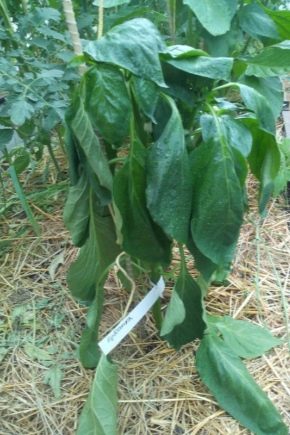
Seedlings belonging to a particular garden crop can wilt from improper care and inappropriate conditions, and pepper is no exception to this rule. To save dying seedlings, there are several ways, not all of them are effective when time is lost.
Unsuitable conditions
Wrong conditions for the growth and development of pepper, good fruiting in the harvest season - high temperature in the heat, lack of rain, soil that is too acidic or oversaturated with alkalis, swampy terrain, an attempt to germinate it without a greenhouse in the Far North. Transplanting too late is also considered a violation if you do not have an all-weather heated greenhouse that continues to operate even in winter.
Seedlings, the growth of which has stopped in the cells placed on the window, must be immediately planted in the beds.
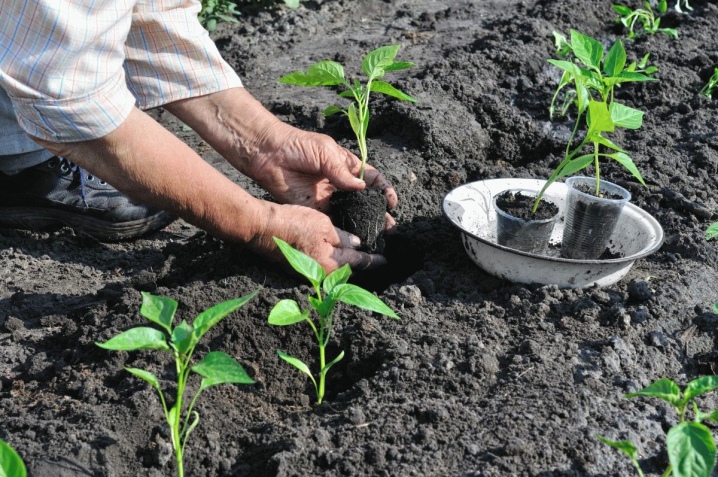
Improper care
The reasons why peppers wilt are as follows.
- Watering during the heat. You will not turn on the tap for half a day, even when you have free water on your site, taken from a well and poured into a tank through a manual pump. If watering in the open field in the heat quickly ended, then the wet earth will heat up in an hour to 55 degrees or more, and the water, which becomes almost hot, will simply scald the roots of the plants. The first signs - the top falls, the leaves hang, the affected plant cannot be saved. Such violations also include watering with overheated water in the cistern.
- Untimely fertilization. It is extremely difficult to make chernozem from podzolic soil - it would take to fertilize the soil for at least three years with huge portions of organic matter, before humus accumulates so much that the soil changes its color from grayish to almost black. Too rare top dressing, especially on extremely poor soils, for example, clay-sandy, leads to depletion of pepper, a small amount of harvest, the plants do not gain the required splendor and width of the crown, standard (characteristic of a particular type of crop) height. The main food for plants, in addition to ash and plant residues, is potash and phosphorus fertilizers.
- Refusal from treatment against insect pests, mold, fungus and pathogenic bacteria. The defeat by late blight, putrefactive formations is a natural phenomenon: all these pathogens of "garden ailments" appear where weeds have grown up to the waist and higher, the owner's feet have not stepped for weeks. It is necessary to use at least folk remedies - boric acid, iodine, potassium permanganate, iron or copper sulfate, if you do not want to use pesticides and herbicides.
- Refusal from forming, sanitary pruning, pinching, pinching and other proceduresaimed at limiting the growth of excess green growth, which takes up the lion's share of nutrients, which are absorbed from the soil in the form of an aqueous solution when watering garden crops.
- Untimely watering - not every day or once every two days, but, say, once a week. A plant that does not receive enough moisture weakens and slows down or completely stops growing. A common mistake - watering with boiled chilled water, as well as at temperatures below +18 - can destroy pepper, and indeed any cultivated plant.
- An attempt to grow pepper not in black soil. The soil with the minimum nutritional properties is chestnut, but it should not be clay. In clay, especially in the one that is smeared after watering and poorly, it is washed for a long time, there is practically no air: it does not allow water to pass through well, practically "closes" the roots in an airless space. And they, in turn, also need minimal, but still breathing. As a result, if the seedlings sprout (when planting seeds in the open field), they will grow poorly and will soon die. Germinating a plant in sand, which does not contain any useful substances (quarry, washed sand without fertilizers), will not give results: the seedlings will simply have nothing to feed on, and if the introduction of mineral and organic fertilizers does not come in time, they will not grow and will also die.
- Do not make such mistakes - pepper, like any culture, needs timely nutrition., watering and protection from disease. To reduce water consumption, you can germinate peppers in a hermetically sealed greenhouse, from where the water does not evaporate, and where there is always - every day - a bright light. This is evidenced by the cases of experimenters who tried to grow various crops in a tight-fitting 19-liter bottle or container with transparent walls.
- Growing seedlings in the sun in extreme heat, on a windowsill above heating radiators, turned on at full power, is capable of destroying newly hatched plants.
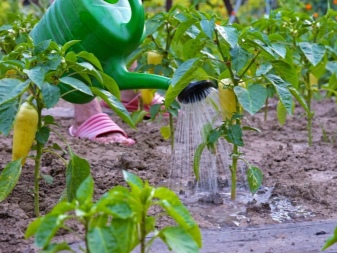
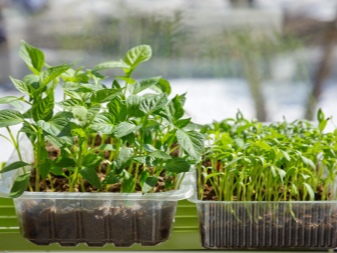
In a greenhouse and a greenhouse, so that no fungus starts to grow, dangerous microbes do not multiply, daily ventilation will be required in order to reduce excess moisture, since its relative level of 90-100% harms all crops.
Treatment of diseases
The list of diseases that "like" to infect peppers is as follows: gray rot, black leg, fusarium, verticellosis and late blight. By the way, late blight also affects tomatoes. The task is to prevent the "spreading" of these pathogens throughout the entire area, otherwise it would be necessary to dig up and burn everything that grew before this "invasion".
Gray rot
The gray rot of the sweet pepper attacks the seedlings and the germination sites of new shoots from the already existing main lashes. The causative agent is a fungus that parasitizes 200 cultivated and ornamental plant species. Can also infect fruits. Appears in the form of greenish-grayish spots in which spores multiply. At the same time, the leaves turn yellow. If you do not process the plant, then it will soon die. Some lateral shoots are primarily affected. Treatment - spraying or smearing with imidazoles (a class of pesticides).
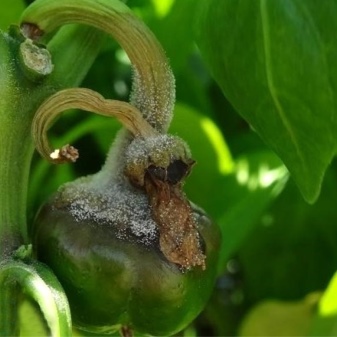
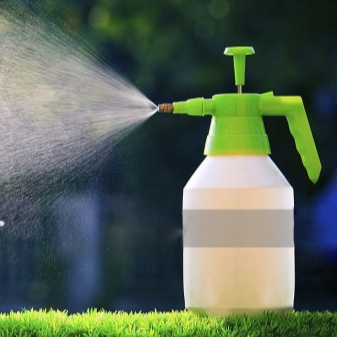
Blackleg
Blackened Stem - the lower part of the stem affected by microbes. The culprit of such a defeat of the bush is the soil in which these bacteria have grown. Treatment of the disease is carried out at an early stage, until the stem becomes thinner, which causes the entire plant to die quickly. The first signs are that the stem is discolored. Yellowing, leaf necrosis at the edges is observed. It is impossible to detect this disease until a significant part of the stem is affected. To destroy the "black-footed" microbes, a 1% solution of potassium permanganate is used, which is sprayed on the plants themselves and watered on the soil. 3 g of potassium permanganate is diluted in a bucket of water - the solution should be light crimson. After watering and spraying with this solution, seedlings or grown pepper plants should not be watered for at least three days.


Late blight
The defeat of the late blight fungus begins with the fruit. The brown "rash" spreads to leaves with lateral branches, from where it gets to the trunk. For the treatment of late blight, more than a dozen fungicides are used.
Folk remedies - prevention in the form of formative and sanitary pruning, spraying plants with a weak iodine solution (up to 1 ml per bucket of water).
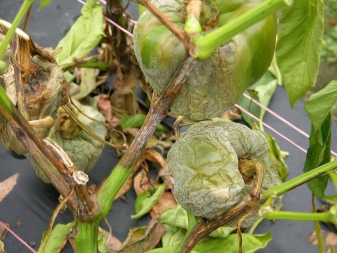
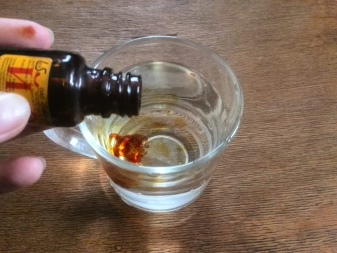
Fusarium
Fusarians infect plants of bitter and bell peppers from the inside - they get there with water, along with nutrients, through the roots, directly from the soil. When the fungus grows inside the stem in the form of dark threads, it takes on water and nutrients, clogging up the thinnest vessels, and the plant withers, then dies and dries. Both the upper and lower leaves immediately wither and die off along with the top. From folk remedies, an infusion of cow dung and ash helps - it is prepared in a 1: 3 ratio, filtered after infusion for three days. The plants are watered at the root. Affected plants are destroyed.

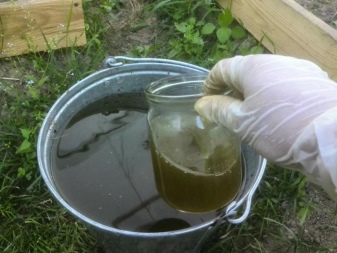
Verticillary wilting
Signs of verticillosis are dead areas of the roots starting from their tips. It can only be detected by fruits that differ from healthy ones. The fungus may not interfere with flowering and fruiting for some time; in some cases, even the ripening of the crop is possible. It is not always possible to cure the affected plant, the best measure is preventive methods, however, a mixture of copper sulfate and lime, as well as the biological product "Trichodermin" can still help out. A weak solution is prepared - no more than 1%, after which the plants are sprayed with it completely.
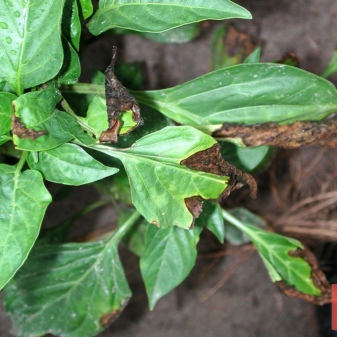
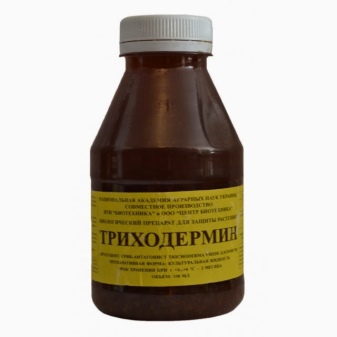
Pest control
Ant colonies can be removed with sugar dissolved in a weak boric acid solution. Ants eat sugar, some of them drown in this syrup, survivors carry boric acid throughout the anthill, and it will eventually go broke. Another way to get rid of ants and keep them from starting is by watering your beds abundantly. In the place where they settled, water is poured so that they scatter, or, again, a weak solution of boric acid or iodine is poured out.
To remove whiteflies, the plants are sprayed with a mild soapy solution. It is easy to make such a solution: dissolve the laundry soap until the resulting solution starts to lightly soap your hands. But from whitefly, potassium permanganate, iodine and boric acid are also suitable, as well as from ticks, aphids and other pests.
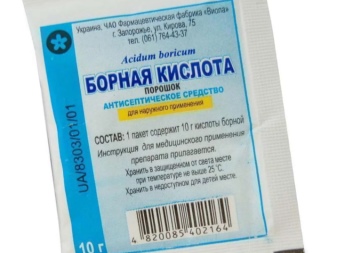
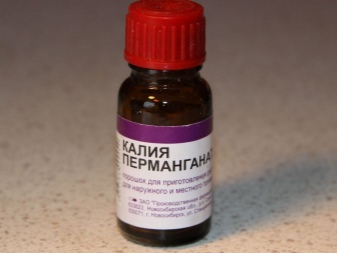













The comment was sent successfully.